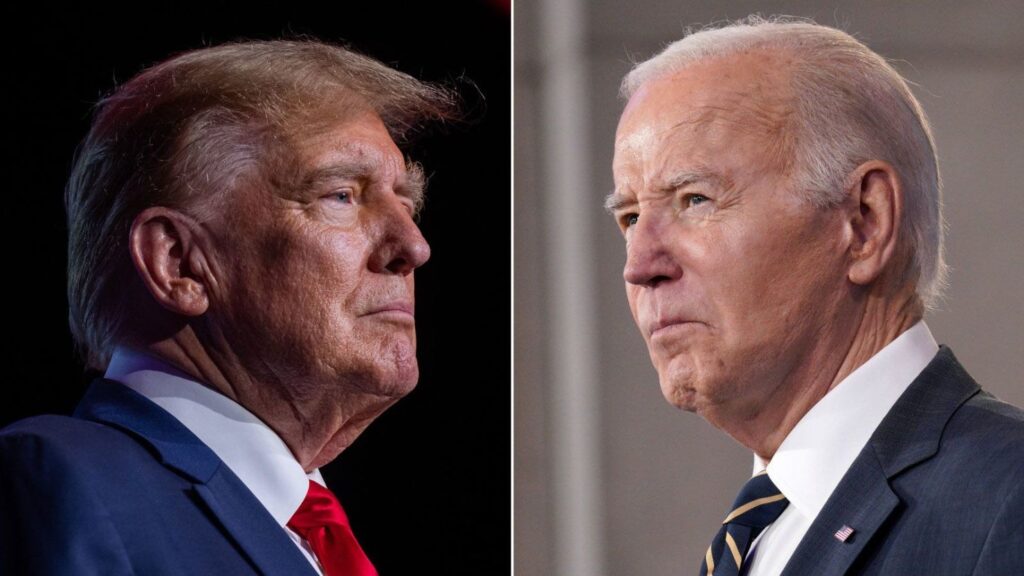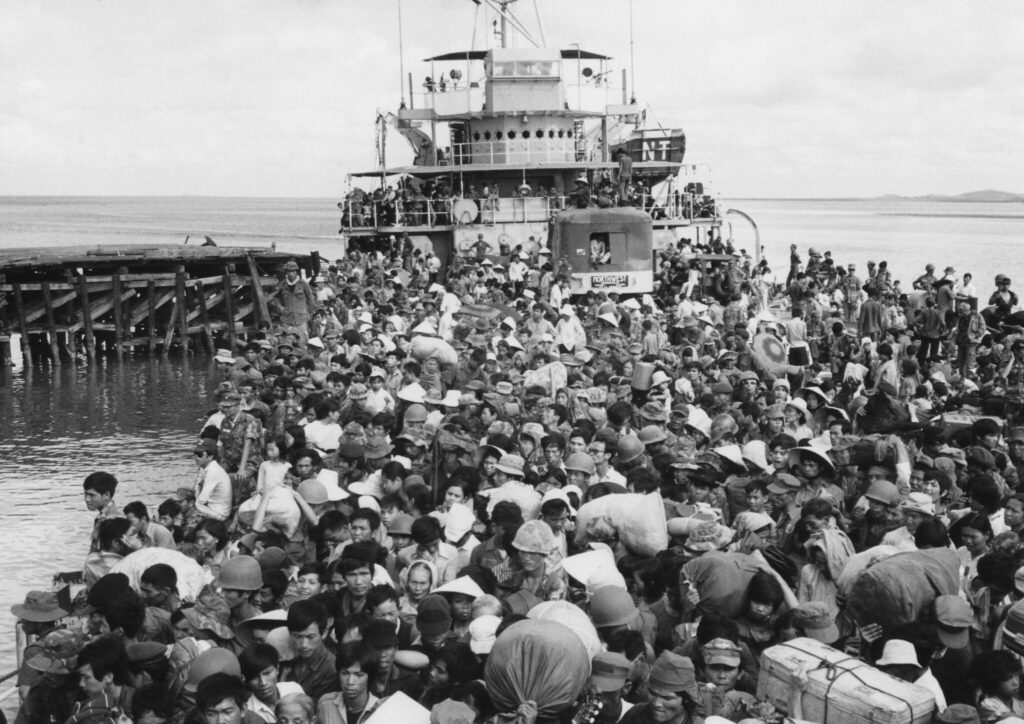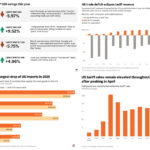Joe Biden has made more use of immigration “parole” than any American president to bypass an uncooperative Congress, but he’s hardly the first. The presidential power has been a centerpiece of Biden’s strategy to channel immigrants through new and expanded legal pathways and discourage illegal crossings, a radical difference from his rival Donald Trump.
Quick Read
- Immigration Parole Usage: President Joe Biden has significantly utilized immigration “parole” to create new legal pathways for immigrants, contrasting with Donald Trump’s stance.
- Historical Context: Parole has been used by presidents since 1952 for humanitarian reasons or public benefit, with notable instances during crises in Hungary (1956), Vietnam (1975), Cuba (1980), and Venezuela (2023).
- Hungary, 1956: Edith Lauer and her family fled Soviet-occupied Hungary, finding refuge and opportunities in the United States.
- Vietnam, 1975: Kim-Trang Dang escaped Saigon during the Vietnam War’s end, eventually working as a social worker in the U.S.
- Cuba, 1980: Mabel Junco’s family left Cuba during the Mariel boat lift, with her parents working hard to build a new life in Miami.
- Venezuela, 2023: Berioskha Guevara, fleeing Venezuela’s economic crisis, found a new start in the U.S. through parole, contrasting the experiences of previous generations.
- Legal Challenges: Biden’s extensive use of parole faces legal challenges, notably from Texas and 20 other states, arguing it circumvents legislative authority.
- Diverse Experiences: The use of parole has provided diverse groups with opportunities for safety, work, and freedom, reflecting the changing dynamics of U.S. immigration policy.
The Associated Press has the story:
Immigration ‘parole’ is a well-worn tool for US presidents. It faces a big test in 2024 elections
Newslooks- (AP)
Joe Biden has made more use of immigration “parole” than any American president to bypass an uncooperative Congress, but he’s hardly the first.
The presidential power has been a centerpiece of Biden’s strategy to channel immigrants through new and expanded legal pathways and discourage illegal crossings, a radical difference from his rival Donald Trump.
Biden granted at least 1 million temporary visits, which generally include eligibility to work. Trump has said during his campaign to return to the White House that he would end the “outrageous abuse of parole.”

Parole, which was created under a 1952 law, allows the president to admit people “only on a case-by-case basis for urgent humanitarian reasons or significant public benefit.” It has been ordered 126 times by every president since then except for Trump, according to David Bier of the pro-immigration Cato Institute.
The Associated Press spoke with immigrants who arrived during four major parole waves over the past 72 years.

___HUNGARY, 1956
Edith Lauer was a 14-year-old student when she left Budapest with her parents and older sister Nora in November 1956. Her parents felt unsafe after Soviet tanks invaded, crushing a short-lived revolt against the Moscow-controlled government. Many fled, including about 32,000 who were paroled in the United States.
“They knew that if they waited around, they would be arrested, (possibly) tried in a communist trial … and or executed,” Lauer, 81, recalled from her home in Cleveland.

The four went to a military base in Munich, where they stayed for weeks until her mother’s cousin sponsored them and offered his house in Silver Spring, Maryland.
Edith Lauer arrived by military plane at Camp Kilmer, New Jersey, a former army camp converted to Hungarian refugee housing.
“My God, this is freedom, democracy, it was just a totally different world,” she remembers thinking. “I recognize that very, very soon, and … everybody was so welcoming and so wonderful.”

Her father, a lawyer and the only one in the family who spoke English, became a librarian at the Library of Congress. Her mother started as a dishwasher and went on to work at a laboratory producing serum from monkeys.
In 1963, Lauer married an American student she met at the University of Maryland who later became a corporate executive. She graduated from Texas A&M University and became a teacher. She has two daughters and two grandchildren, and founded a nonprofit organization to promote understanding of her people.
___VIETNAM, 1975
The Vietnam War era produced an exodus from Southeast Asia that brought parole to about 340,000 people.
Kim-Trang Dang was a 25-year-old law student working as teacher when she left Saigon with her then-husband, two siblings and five other family members. Her father and two sisters had left days earlier. It was April 1975, just before the capital of South Vietnam fell to North Vietnamese communist forces.

They drove a half-hour in the middle of the night to a river port where a boat was waiting. There were bombs, and fire in the streets, but they were told a U.S. military ship was going to pick them up at sea.
They went to Subic Bay, the Philippines, and then Guam, before being transferred to a camp at Fort Chaffee, a military installation in western Arkansas where they stayed for about a month waiting for a sponsor who could take them out to live in the U.S.
The sponsor offered them his house in Tampa, Florida. Kim-Trang got a job at a shrimp factory, where she spent eight hours a day pulling off shrimp skin and had English classes at night. She moved to San Diego in the 1980s and got a job as a social worker at a Catholic organization, where she retired after 23 years.

Kim-Trang, 73, has three U.S.-born children and five grandchildren.
“I’m happy that I have a freedom here, and I don’t live under the communism,” she said. “When I met them, the Americans were really nice … They opened their arms to us. If they don’t open their arms, we don’t know where to go.”
She had her own business taking care of the elderly. Now, she volunteers as president of a Vietnamese service organization. She became a U.S. citizen in 1980.
___CUBA, 1980
Mabel Junco, who arrived at Key West, Florida in a fishing boat rented by her uncle, was one of about 125,000 Cubans who got parole in 1980. They were processed at refugee camps in South Florida.
Junco’s family disapproved of the Cuban government and in April 1980 leader Fidel Castro unexpectedly announced that any Cuban who wanted could leave the island from the port city of Mariel.

Mabel, then 11, relied on an uncle who had lived in Miami for almost 10 years. He rented a fishing boat for her, her parents, and older sister, who was 16. They left their home in Havana for the port city of Mariel and found the boat was in bad shape, and full of people.
Mabel, her mother and her sister boarded another boat carrying women and children. Her father and uncle stayed in the damaged boat, which was towed by another until a U.S. Coast Guard vessel rescued them. After a night of sailing, they reunited in Key West as part of what became known as the Mariel boat lift.

After about three months at the uncle’s house, the family moved into a rented one-bedroom apartment. The parents obtained work permits and would leave early in the morning and return at night. The two girls walked to and from school alone, cooked and did housework.
The mother, who was a seamstress in Cuba, worked in a clothing factory in Miami. The father drove trucks, like he did in Cuba, until a few years later he opened a transportation company for the elderly. Four years later the family had their own house, with a room for each person.
“In Cuba things were very difficult, very bad,” said Junco, now 55 and a teacher in Jacksonville, Florida. “Here life has given us many opportunities, we have fought forward … my parents always taught us that you come to work, and you do not get anything free from the government.”
Junco married a Cuban who left the island when he was three years old. They have two sons, 30 and 26.
___VENEZUELA, 2023
Berioskha Guevara has no words to describe her happiness living in the United States. After decades of fear as a political opponent in Venezuela and struggles to buy staples like milk and bread, the 53-year-old chemist feels she is dreaming.
Guevara and her 86-year-old father came to the U.S. under the sponsorship of her brother, a pharmacist who left after Hugo Chavez took power in 1999.

“Now we are like in paradise,” said Guevara, who arrived in July 2023. “I can’t stop smiling, making plans, thanking God because without parole I would never have been able to live my dreams as I am living them now.”
More than 7.7 million Venezuelans have fled the country as it went into an economic tailspin over the last decade. They are increasingly headed to the United States, which prompted the Biden administration to offer parole to 30,000 people a month from Cuba, Haiti, Nicaragua and Venezuela.

Texas and 20 other states sued, saying the administration “effectively created a new visa program —without the formalities of legislation from Congress” but does not challenge large-scale parole for Afghans and Ukrainians. A judge has yet to rule after an August trial.
In Venezuela, Guevara graduated in 2003 with a bachelor’s degree in chemistry and for the last decade worked at a foreign private oil company earning $200 a month. It was a relatively good salary for Venezuelans, but inflation was very high, and food scarce. She worried about being arrested for being an opponent of the government.
In the U.S., four months after filing for work authorization, she got a job at a supermarket. She is looking for work that would use her chemistry background while living with her father in her brother’s one-bedroom apartment in Orlando, Florida.







